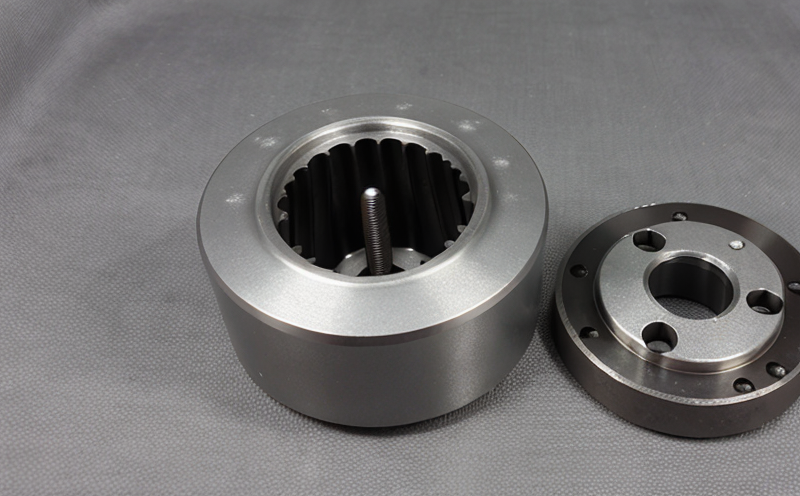ISO 12737 KIC Testing of Additively Manufactured Materials
The ISO 12737 test method is a critical tool in the quality assurance arsenal for additively manufactured (AM) materials. This testing procedure evaluates the resistance to crack growth under stress, which is essential for ensuring structural integrity and reliability. The KIC value, or critical fracture toughness, provides insight into how materials will perform under dynamic loading conditions, especially in environments where fatigue failure could occur.
The ISO 12737 test involves subjecting a notched specimen to a slow cyclic loading until the crack growth rate reaches a specified threshold. This process is designed to mimic real-world stress situations that components might encounter during their operational life cycle. The test can be conducted on various AM materials such as stainless steels, titanium alloys, and nickel-based superalloys.
Preparation of specimens for ISO 12737 testing requires careful attention to detail. Specimens must typically be machined from additively manufactured parts, ensuring they are representative of the material properties and microstructure. The notch geometry is crucial as it directly influences the stress concentration factor and thus the KIC value obtained.
The testing equipment used in ISO 12737 includes specialized fatigue testing machines capable of applying cyclic loading at controlled rates. These machines often come equipped with data acquisition systems to capture detailed information on load, displacement, and crack growth during the test cycle. Advanced imaging techniques like digital image correlation (DIC) may also be employed to monitor crack propagation visually.
The results from ISO 12737 testing are used extensively in various stages of product development, including design optimization, manufacturing process validation, and compliance with international standards. Compliance with ISO 12737 can enhance a company's reputation as it demonstrates adherence to stringent quality control measures.
- Quality Assurance: Ensures that the material used in AM processes meets specified strength requirements under cyclic loading conditions.
- Reliability: Provides confidence that parts will perform reliably over their intended lifetime, even when subjected to high-stress environments.
Why It Matters
The importance of ISO 12737 testing cannot be overstated in the realm of additively manufactured materials. As AM technology continues to evolve, there is an increasing need for robust quality assurance procedures that account for the unique characteristics of these materials. Additive manufacturing allows for intricate designs and lightweight structures; however, it also introduces potential weaknesses due to microstructural variations and porosity.
By conducting ISO 12737 tests, manufacturers can identify any inherent flaws within their AM processes early in the development cycle. This not only improves product performance but also reduces costs associated with rework or failure during production runs. Additionally, compliance with this standard helps companies meet regulatory requirements and gain market access to regions that mandate adherence to international standards.
- Regulatory Compliance: Many industries, such as aerospace and automotive, have strict regulations governing the use of certain materials in specific applications. Ensuring compliance through rigorous testing like ISO 12737 is crucial for maintaining certifications and avoiding costly penalties or delays.
- Customer Confidence: Demonstrating a commitment to quality by undergoing such stringent tests builds trust with customers who value safety and reliability above all else.
Quality and Reliability Assurance
The ISO 12737 KIC test plays a pivotal role in maintaining high standards of quality and reliability in additively manufactured parts. This is particularly important given the complexity involved in AM processes, which can introduce variability into material properties that might not be present in conventionally manufactured products.
Through this testing method, manufacturers ensure that their materials exhibit acceptable levels of toughness across different loading scenarios. The test helps identify any potential weaknesses or inconsistencies within the manufacturing process, allowing for corrective action to be taken promptly. This proactive approach ensures consistent quality throughout large-scale production runs and minimizes the risk of part failure in end-use applications.
- Consistency: By measuring KIC values consistently across multiple samples from a single batch or process, manufacturers can confirm that their AM processes are producing parts with uniform mechanical properties. This consistency is vital for meeting customer expectations and ensuring product reliability.
- Error Detection: Early detection of flaws through ISO 12737 testing allows for the correction of issues before they escalate into major problems during production or end-use. This prevents costly recalls and repairs while enhancing overall operational efficiency.
Competitive Advantage and Market Impact
In today’s competitive marketplace, maintaining a strong commitment to quality assurance is key to gaining and sustaining market leadership. For companies involved in the design and production of additively manufactured parts, ISO 12737 KIC testing offers significant advantages that can translate into enhanced competitiveness.
- Market Differentiation: By offering products that have been rigorously tested according to international standards like ISO 12737, manufacturers can differentiate themselves from competitors who may not adhere to such stringent protocols. This differentiation can attract more discerning buyers looking for superior quality and reliability.
- Innovation Facilitation: The insights gained from ISO 12737 testing enable continuous improvement in AM processes, leading to innovations that push the boundaries of what is possible with these technologies. These advancements can lead to new product offerings or improvements in existing ones, giving companies a strategic edge.
The global demand for advanced materials and precision manufacturing solutions continues to grow, driven by industries such as aerospace, automotive, medical devices, and electronics. Companies that prioritize quality assurance through ISO 12737 testing are better positioned to capture these opportunities, thereby increasing their market share.





